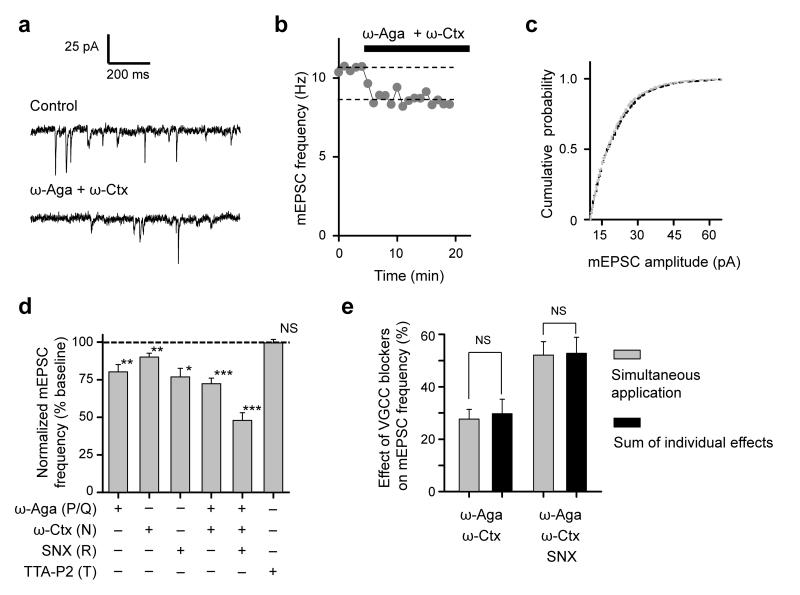Figure 1.
Differential triggering of spontaneous excitatory neurotransmission by P/Q-, N- , and R-type Ca2+ channels. (a–c) Representative experiment illustrating the effect of P/Q- and N-type VGCC blockade with ω-Aga and ω-Ctx on excitatory miniature release. (a) mEPSCs before (Control) and 10 min after application of both toxins, (b) time-course of mEPSC frequency, and (c) cumulative distributions of mEPSC amplitudes before (black) and after (gray) application of toxins, showing no effect of ω-Aga and ω-Ctx. (d) Summary graphs showing effects of the selective P/Q-, N-, R-, and T-type channel blockers on mEPSC frequency (mean ± s.e.m, ω-Aga, N = 14; ω-Ctx, N = 12; SNX N = 5; ω-Aga and ω-Ctx, N = 25; ω-Aga, ω-Ctx and SNX, N = 17; TTA-P2, N = 12 cells). See also Supplementary Table 1. (e) Linear summation of ω-Aga, ω-Ctx and SNX effects on mEPSC frequency (mean ± s.e.m). Sums of individual effects of the VGCC blockers (black bars) were calculated using data from (d). *** P < 0.001, ** P < 0.01, * P < 0.05, NS P > 0.75; single group mean (d) and unpaired comparison (e) t-tests.

